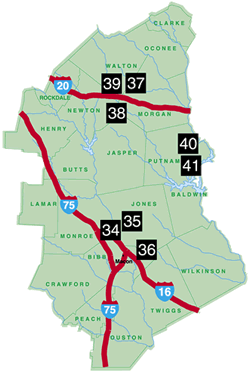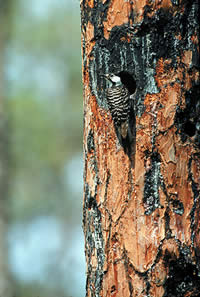
Wildlife Viewing Guide


|
Wildlife Viewing Guide |
 |

 Historic
Heartland
Historic
HeartlandBoth history and wildlife viewing of high quality are found in the geographic heart of the State. The Historic Heartland is characterized by rolling piedmont forests of second-growth pine and hardwood river swamps. The swamps occur in significant acreage along the Ocmulgee and Oconee Rivers after they pour over the Fall Line into the Coastal Plain near Macon and Milledgeville, respectively. These swamps provide some of the most significant wildlife habitat in the State. Many smaller rivers in the area provide opportunities to study both human and natural history. The Towaliga River at the Fall Line, and the Alcovy, Yellow, and South rivers farther north in the area, provide much of the water to continue the seasonal floods below the Fall Line. The Alcovy drainage in Newton and Walton Counties contains river swamps that are remnants of the ancient Coastal Plain. The mature forest habitats of Piedmont National Wildlife Refuge provide an unusual haven for deep forest wildlife. By contrast, most of the area was in agriculture, principally cotton, in the 1850s. By 1900, the eroded cotton fields were reverting to timber species which have been managed and harvested several times since then. This silvicultural practice has contributed to a continuing "old field succession" which promotes wildlife diversity in the area, especially among birds that require open space.
Historic Heartland
Read and add comments about this page